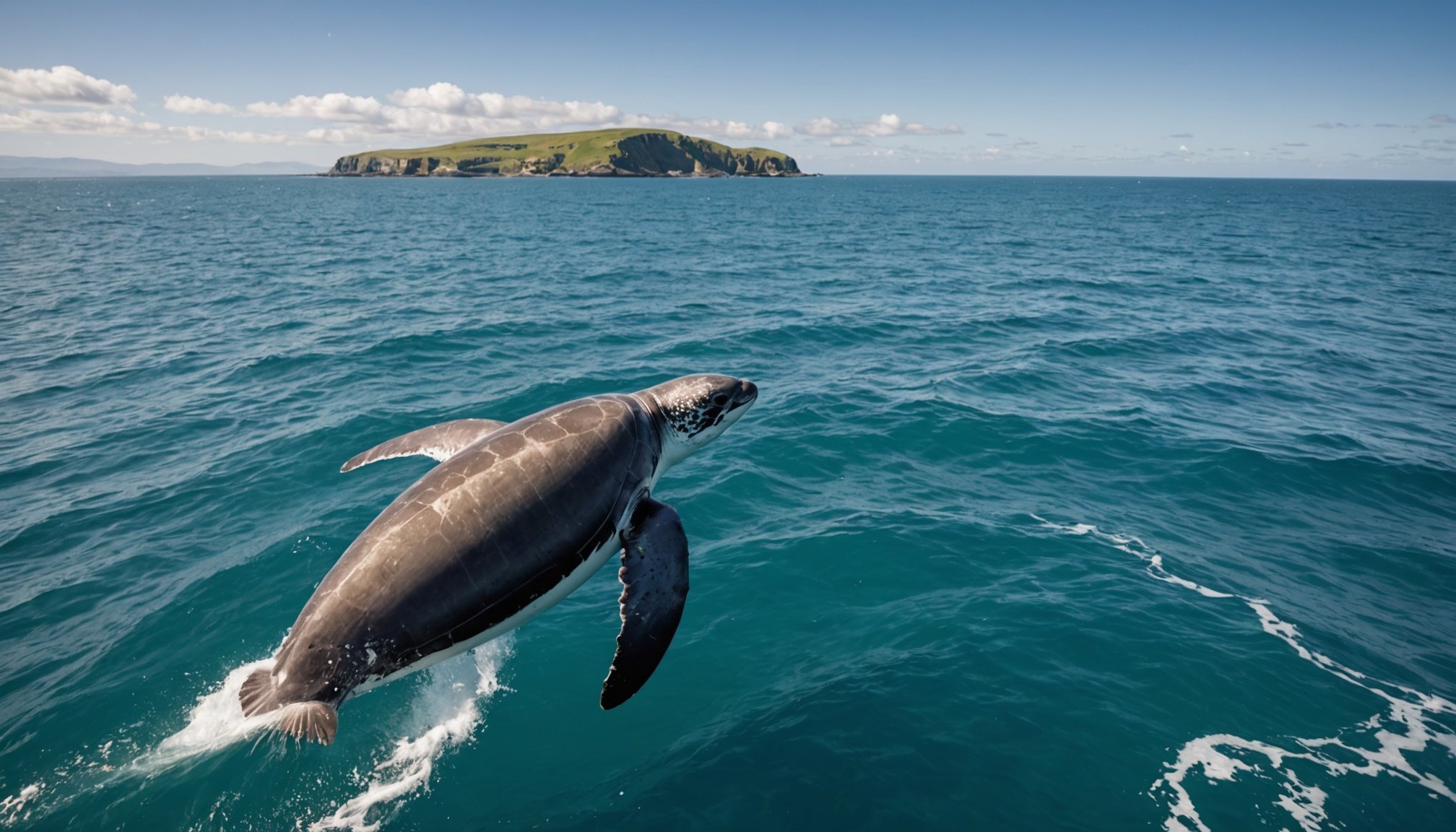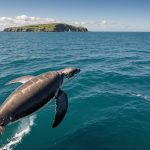Unlocking the Secrets: How UK Marine Conservation Zones Protect Endangered Ocean Wildlife
The Importance of Marine Conservation
Marine conservation is a critical aspect of protecting the world’s oceans and the diverse array of life they support. The UK, with its extensive coastline and rich marine biodiversity, has been at the forefront of marine conservation efforts. One of the key tools in this endeavor is the establishment of Marine Conservation Zones (MCZs) and other protected areas.
Why Marine Conservation Matters
The oceans cover over 70% of the Earth’s surface and are home to a vast array of marine life, from the tiny plankton to the massive blue whale. These ecosystems provide numerous benefits, including oxygen production, carbon sequestration, and support for global food security. However, marine ecosystems are facing unprecedented threats, such as climate change, plastic pollution, and overfishing.
Also to discover : Exploring How Urban Greening Spurs Bird Diversity in UK City Centers
“Marine ecosystems continue to provide ecological, social, and economic benefits, but they are under significant pressure,” notes Gillian Martin, Acting Cabinet Secretary for Net Zero and Energy in Scotland. “Managing our seas sustainably to protect their rich biological diversity is crucial for the long-term needs of nature and people”[3].
The UK’s Marine Protected Areas Network
The UK has made significant strides in expanding its network of marine protected areas. These areas are designated to conserve the diversity of nationally rare, threatened, and representative habitats and species.
Topic to read : Harmonizing Nature: Eco-Tourism’s Role in UK Habitat Conservation and Protection
Extent and Growth of Protected Areas
Between 2005 and 2024, the total extent of land and sea protected in England through national and international protected areas increased dramatically, from 1.3 million to 3.5 million hectares. This represents a 170% increase, with a substantial portion of this growth attributed to the designation of marine sites. As of 2024, marine sites cover 49% of inshore waters around England, with a 45% increase in the last five years alone[1].
In Scotland, the Marine Protected Area (MPA) network now covers 37% of its seas, exceeding the global biodiversity target of 30% by 2030. This network includes 17 new MPAs designated since 2018 and three existing MPAs extended to afford increased protection to seabirds and seabed habitats[3].
Key Components of Marine Conservation Zones
MCZs are designated under the Marine and Coastal Access Act 2009 and play a vital role in the UK’s marine conservation strategy.
Types of Designations
- Sites of Special Scientific Interest (SSSIs): These sites are designated for their scientific interest, protecting habitats and species.
- Special Areas of Conservation (SACs): Designated under the European Birds and Habitats Directives, these areas protect habitats and species of European importance.
- Special Protection Areas (SPAs): These areas are designated to protect bird species.
- Marine Conservation Zones (MCZs): These zones are specifically designated to conserve the diversity of nationally rare, threatened, and representative habitats and species[1][4].
Factors Contributing to MPA Effectiveness
Research has identified several key factors that contribute to the effectiveness of Marine Protected Areas:
- Enforcement: Adequate enforcement ensures adherence to rules and regulations within MPAs, which is crucial for their success.
- MPA Design: Effective MPA designs are characterized by features such as no-take zones, enforcement, age (older than 10 years), large size (over 100 km²), and isolation. These features result in higher species biomass increases[2].
- Stakeholder Engagement: Engagement with stakeholders is associated with high compliance and positive perceptions of MPAs, enhancing their legitimacy and effectiveness[2].
The Impact of Marine Protected Areas
The designation and effective management of MPAs have shown significant positive impacts on marine ecosystems.
Improvements in Marine Ecosystems
In Scotland, the implementation of management measures for fishing activities within MPAs has led to improvements in the state of vulnerable habitats. Monitoring has identified positive changes, demonstrating the effectiveness of MPA management[3].
In England, the increase in marine protected areas has contributed to the conservation of diverse marine habitats and species. For example, the designation of Marine Conservation Zones has helped protect flapper skate egg nurseries and other critical habitats[1].
Challenges and Future Directions
Despite the progress made, there are still significant challenges to overcome in marine conservation.
Addressing Climate Change
Climate change poses a major threat to marine ecosystems, with impacts such as ocean acidification, warming waters, and changes in species distribution. Integrating climate change mitigation and adaptation strategies into MPA management is essential for their long-term success.
“Climate change is a pressing issue that affects marine ecosystems in multiple ways. Our conservation efforts must be adaptive and resilient to these changes,” emphasizes a report by the Joint Nature Conservation Committee (JNCC)[4].
Tackling Plastic Pollution
Plastic pollution is another critical issue affecting marine life. Marine protected areas can help mitigate this by reducing human activities that contribute to pollution within these zones. However, broader societal changes, such as reducing plastic use and improving waste management, are also necessary.
“Plastic pollution is a global problem that requires a global response. While MPAs can help, we need to address the root causes of plastic pollution to protect our oceans effectively,” notes a study on marine protected areas[2].
Practical Insights and Actionable Advice
For those interested in supporting marine conservation, here are some practical insights and actionable advice:
Support Conservation Efforts
- Volunteer: Join local conservation groups or participate in beach cleanups to contribute directly to marine conservation.
- Advocate: Raise awareness about the importance of marine conservation and support policies that protect marine ecosystems.
Reduce Plastic Use
- Use Reusable Products: Switch to reusable bags, water bottles, and straws to reduce single-use plastics.
- Recycle: Ensure that you recycle as much as possible, including plastics, to reduce waste.
Choose Sustainable Seafood
- Look for Certifications: Choose seafood that is certified as sustainably sourced to support responsible fishing practices.
- Support Local Fisheries: Buy from local fisheries that adhere to sustainable fishing methods.
The UK’s marine conservation efforts, particularly through the establishment and management of Marine Conservation Zones, are a beacon of hope for the protection of endangered ocean wildlife. By understanding the importance of these protected areas, the factors that contribute to their effectiveness, and the challenges they face, we can better support these critical conservation initiatives.
As we move forward, it is essential to continue expanding and effectively managing these protected areas, while also addressing broader issues such as climate change and plastic pollution. Together, we can ensure the long-term health and biodiversity of our oceans.
Detailed Table: Extent and Percentage Cover of Protected Areas by Country
| Country | On Land (M Ha) | On Land (Percentage) | At Sea (M ha) | At Sea (Percentage) |
|---|---|---|---|---|
| England | 3.45 | 26.4% | 9.27 | 40.3% |
| Scotland | 2.33 | 29.6% | 22.76 | 36.9% |
| Wales | 0.61 | 29.4% | 1.55 | 50.3% |
| Northern Ireland | 0.40 | 28.4% | 0.24 | 35.6% |
| United Kingdom | 6.79 | 27.8% | 33.82 | 38.2% |
Source: Joint Nature Conservation Committee (JNCC)[4].
Detailed List: Factors Contributing to MPA Effectiveness
-
Enforcement:
-
Ensures adherence to rules and regulations within MPAs.
-
Correlates with ‘Overall Management Success’ (OMS).
-
Example: Effective enforcement in Scottish MPAs has led to improvements in vulnerable habitats[2][3].
-
MPA Design:
-
Features such as no-take zones, enforcement, age (>10 years), large size (>100 km²), and isolation.
-
Presence of more features results in higher species biomass increases.
-
Example: MCZs in England are designed to conserve nationally rare, threatened, and representative habitats and species[1][2].
-
Stakeholder Engagement:
-
Associated with high compliance and positive perceptions of MPAs.
-
Enhances legitimacy and effectiveness of MPAs.
-
Example: Stakeholder engagement in Scotland has been crucial for the development and implementation of MPA management measures[2][3].
By understanding and implementing these factors, we can enhance the effectiveness of marine protected areas and better protect the world’s oceans.















